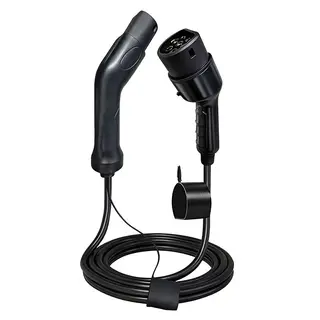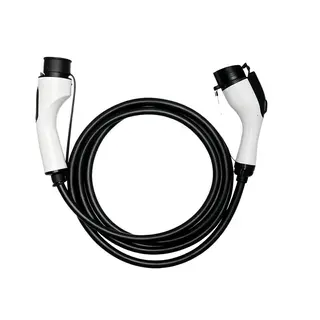In today's automotive market, pure electric vehicles (EVs) are gradually becoming the mainstream choice. However, despite their significant advantages in environmental protection and operating costs, two major bottlenecks still limit their wider adoption: battery power density and charging speed. These two issues not only affect the manufacturing cost and driving range of EVs but also directly restrict their convenience of use. This article will explore the limiting factors of pure electric vehicle charging speed and provide some practical charging suggestions.
As the core component of an electric vehicle, the battery's performance directly determines the vehicle's driving range and charging speed. However, the physical and chemical characteristics of the battery also bring many limitations to charging speed. These limitations stem not only from the internal structure of the battery but also are closely related to materials, temperature, and charge/discharge rates. Understanding these limitations helps us better comprehend the bottlenecks of EV charging speed and provides a scientific basis for subsequent charging suggestions.
To understand the limitations of charging speed, it is first necessary to understand the battery charging principles. The charging and discharging process of a battery is essentially the directional transfer of electrons between the cathode and anode through a series of redox reactions. Taking the currently mainstream lithium-ion battery as an example, its basic structure includes cathode material, anode material, separator, and electrolyte. During charging, lithium ions leave the anode, pass through the separator and electrolyte, and diffuse to the cathode. Therefore, the diffusion speed of lithium ions is a key factor determining charging speed.
Theoretically, charging speed can be increased by increasing the current. However, when the current is too high, the diffusion speed of lithium ions cannot keep up with that of electrons, leading to a decoupling of electron-ion transport, affecting battery performance, reducing charging capacity, shortening battery life, and even possibly causing fire or explosion. Therefore, a balance between speed and safety must be found during charging.
Temperature also significantly affects battery charging speed. Generally, the higher the temperature, the faster the diffusion of lithium ions. However, excessively high temperatures can shorten battery life and reduce charging safety. Conversely, when the temperature is too low, metallic lithium in the battery may deposit, potentially causing internal short circuits, especially in lithium iron phosphate batteries. For example, at 0°C, the capacity of a lithium iron phosphate battery may only remain around 60% to 70%, and at −20°C, it may drop to 20% to 40%. Therefore, in cold northern winters, electric vehicles need to be equipped with battery heating functions, but this also increases power consumption.
Different cathode materials have greatly different lithium ion diffusion capabilities. Common cathode materials include lithium cobalt oxide, lithium manganese oxide, lithium iron phosphate, NCM (nickel-cobalt-manganese), and NCA (nickel-cobalt-aluminum). Among them, NCM and NCA are currently the best performing and most widely used materials. The charge/discharge rate of batteries is an important indicator describing the relationship between charging speed and current. For example, a rate that fully charges a battery in one hour is 1C, and a rate that charges it in 30 minutes is 2C. Currently, lithium-ion battery charging rates generally range from 1C to 3C, with a maximum of 5C, but still far lower than the 10C discharge rate.
In addition to the limitation of the maximum charging rate, the charging rate that a battery can tolerate at different states of charge (SOC) also varies. Generally, the battery charging rate follows a slow-fast-slow rhythm. When SOC reaches above 90%, the internal resistance of the battery increases significantly, causing the charging rate to drop. Therefore, many electric vehicles, when advertising fast-charging features, usually indicate that under certain fast-charging conditions, the battery can reach 80% to 90% in a short time (such as 1 hour or 30 minutes). For EV users, to save charging time, it is recommended not to deplete the battery below 10%, and charging does not need to always reach full capacity; reaching above 90% or the mileage required for the next trip is sufficient.
The performance and characteristics of external charging equipment largely determine the charging efficiency of EVs. Even if the battery itself can withstand a high charging rate, if the external charging equipment cannot provide corresponding support, charging speed will still be limited. So, what limitations exist in external charging equipment? Let's take a closer look.
Charging piles are key equipment for EV charging, and their output power directly affects charging time. Charging piles are mainly divided into AC charging piles and DC charging piles.
AC charging piles are the most common charging method, usually using 220V AC, the same as household voltage, with a current generally of 16A or 32A. The charging speed of this type of pile is relatively slow; for a battery capacity of around 20kWh, it takes approximately 6 to 8 hours to fully charge. Tesla is an exception. Its high-power wall-mounted adapter also uses 220V AC but adopts a dedicated interface, outputting currents up to 50A, so the charging speed is faster. However, this adapter is not compatible with vehicles of other brands.
DC charging piles have an input voltage of up to 380V, with charging speed significantly faster than AC charging piles. With the same battery capacity, a DC charging pile can fully charge in 2 to 3 hours. However, this fast-charging method also has its limitations. First, frequent use of fast charging will shorten battery life. Second, a large number of EVs charging simultaneously can put tremendous pressure on the grid, even potentially causing local paralysis. Moreover, since the EV charging network is not independent, during peak electricity usage, the charging speed using public transformers in the area will slow down. This is also one reason why many EV users need to charge off-peak.
The power of a charging pile is determined by voltage and current, following the formula P=UI. The output voltage and current of charging piles from different operators vary, so charging power also differs. For example, a fast-charging pile of a certain brand, at SOC 70%, has a current of 151A and a voltage of 364V, resulting in a calculated charging power of 55kW. Tesla's Supercharger peak charging power can reach about 117kW.
Fast-charging piles usually use high-current DC to charge the vehicle battery directly, with currents generally between 150A and 300A, and charging power usually above 40kW. Slow-charging piles have currents generally between 1A and 50A. Home wall-mounted AC chargers usually have 32A/220V, i.e., about 7kW. Plug-in hybrid home chargers generally provide 3.3kW, while pure electric vehicle home chargers provide about 7kW. Common public slow-charging piles have 3kW and 7kW, with 3kW being more common in the market.
Although the rated power on the charging pile and the vehicle's charging power in the manual are theoretical values, actual charging power is affected by multiple factors. For example, during peak electricity usage, if a fast-charging pile draws power from nearby public transformers, as the transformer load increases, voltage drops, slowing charging speed. In addition, the vehicle's battery capacity, battery temperature, and Battery Management System (BMS) also affect charging speed. The main role of the BMS is to protect the battery. During charging, the peak charging power usually occurs in the middle stage, and when SOC exceeds 90%, it enters trickle charging, reducing current and power to prevent overcharging and overheating, thereby protecting the battery.
After understanding the limiting factors of EV charging speed, let's discuss some practical charging suggestions. These tips not only help save charging time but also extend battery life and improve the overall EV experience.
To extend battery life and improve charging efficiency, EV users are advised not to let the battery drop too low. Also, charging does not need to reach full capacity every time; achieving above 90% or meeting the mileage required for the next trip is sufficient. In addition, try to avoid charging during peak electricity periods to reduce the impact of grid load on charging speed.
Select the charging method according to the usage scenario. If a fast recharge is needed, choose a fast-charging pile but avoid frequent use. If the vehicle has a fixed charging time, such as during work hours or nighttime electricity off-peak periods, slow charging or home piles are a better choice.
In cold weather, ensuring the battery temperature is suitable can improve charging efficiency and extend battery life. Many modern EVs are equipped with battery heating functions, but attention should be paid to their impact on power consumption.
Different brands of EVs may have different charging characteristics. Understanding your vehicle's charging characteristics, such as maximum charging rate and BMS operation, can help users better plan charging time and method.
The charging speed of pure electric vehicles is influenced by multiple factors, closely related to the battery's materials, structure, and temperature, and also affected by the type, power, and grid conditions of external charging equipment. Although fast-charging technology continues to develop, safety and battery life must still be prioritized while pursuing speed. By reasonably planning charging time, choosing the appropriate charging method, maintaining proper battery temperature, and fully understanding the vehicle's charging characteristics, users can not only improve charging efficiency but also extend battery life, achieving a more efficient and convenient EV experience. With continuous technological advancement, future improvements in charging speed will further eliminate range anxiety, making electric vehicles a truly ideal choice for daily transportation.



